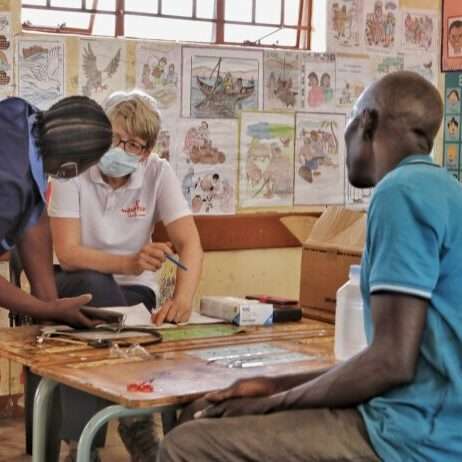Field report General Internal Medicine – Dr. Corinne Rindisbacher
After my first medical mission with Mudiro in Grootfontein in 2021, I was happy to travel to Namibia again and to get to know the people and their everyday life in the northern Kavango region in Andara.
Before the mission, I first traveled with my husband Andreas for a few days to Hakos Astrofarm, 185 kilometers southwest of Windhoek. As soon as we left the tarred road behind us, a familiar feeling of coming home to Namibia set in. We enjoyed the drive through the savannah landscape and the emerging mountains.
The Astrofarm Hakos is a former cattle farm and is beautifully situated. More important was the view of the fantastic dark starry sky. We were well received by amateur astronomers who had traveled from all over the world to join their discussion group. Across language, country, and religious boundaries, interesting and lively conversations and discussions ensued.
We were allowed to look through different telescopes at the night sky and share some of our enthusiasm for this infinite and beautiful sky with its planets, nebulae, and galaxies.
Back in Windhoek, I met Franziska Maurer and Daphné Dougoud, both gynecologists. Together we had prepared beforehand with many WhatsApp for the three-week mission together. Barbara Müller picked us up and drove with us to Grootfontein, 450 kilometers to the north. The next day we got to know the almost completely new team of doctors. Although there was a lot of work waiting for the doctors every day, they gave us 2 hours of lectures every day. They were interested and motivated to learn new things and also to apply them. In Namibia, after graduation, the doctors first work for 2 years as assistant doctors and are trained to become so-called medical officers. Those who have completed their studies in China, Russia, or Cuba must also first complete an eight-month internship followed by an examination. Only then are they admitted as assistant physicians. The medical officers then lead the departments in the state hospitals as doctors who have received broad training, but only for a short time.
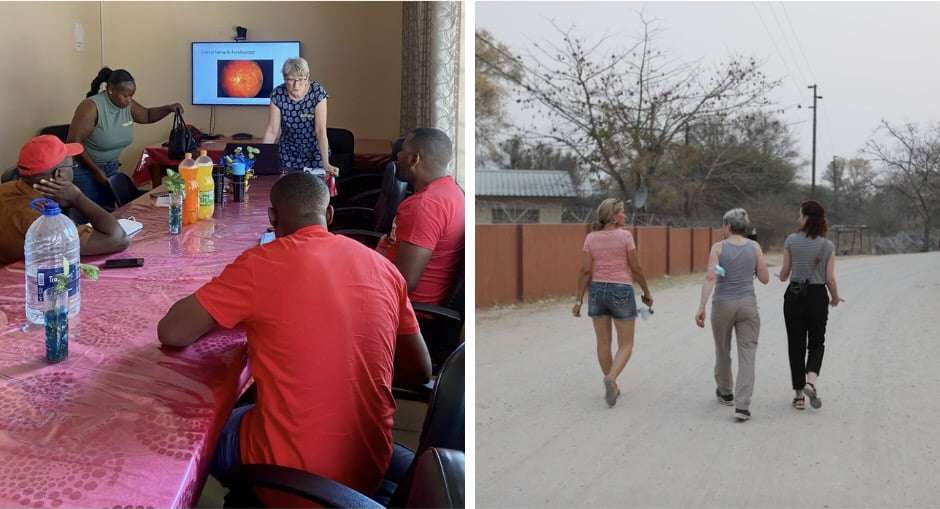
Since many Namibian patients suffer from diabetes, I gave a lecture on the various aspects of diabetes as a chronic disease. In the process, we got into an honest conversation with each other. The Namibian patients and doctors are not used to talking about the mental state of the patients. They recognized the need, but also expressed concern that the patients would find this very unfamiliar. I was able to encourage them to just try it once in a while.
Compared to last year’s stay, antibiotics were used much more cautiously and rationally, as the issue of resistance is now better known.
The common snack and lunch among us doctors was always a nice break from the daily routine and an opportunity to talk a bit more personal. After lunch, I went along on the ward rounds in internal medicine. The resident and I discussed many practical issues and together we practiced examination techniques at the bedside that she was not yet familiar with.
As in the previous year, many severely malnourished infants were hospitalized in the pediatric department. Children also died despite all the efforts of the doctors. Another major factor is that the laboratory facilities are very limited, partly because blood salts or inflammation values are not determined on-site. The blood has to be sent to Windhoek and the results are never completely up-to-date.
The hospital social worker also told me that the suicide rate in Namibia has unfortunately increased considerably. Many Namibians are doing very badly socially and the high alcohol consumption is and unfortunately remains a big issue. In the afternoon I saw patients with various problems in the OPD (outpatient department) with different doctors. We practiced together the careful questioning and examination of the patients and also the procedure for making a diagnosis. The four days together passed very quickly and at the end, we were given a very warm and grateful farewell by the team of doctors.
After a relaxing weekend in Etosha National Park with safari and beautiful animal encounters, we drove the next five hundred kilometers further north to Andara. Finally arrived at the shipping container house of Mudiro, we were warmly welcomed and entertained by Barbara Müller. Afterward we went on a sightseeing tour to the nearby school children’s home and the Catholic hospital.
Behind the hospital is the newly built, empty Covid 19 ward. Although there were currently many children with infections in the hospital, the government did not allow the new department to be opened and put to good use.
The 120-bed hospital is run by 4 doctors. In the morning report, cases were discussed, and sometimes there was time for technical discussions. Afterward, I went on rounds with Dr. Alice to the children’s and men’s wards. The pediatric ward was always very crowded. There were 36 small patients in 4 rooms, each with an adult relative. Most of the children were suffering from gastroenteritis or cough with fever. A considerable number of the children were also malnourished. Fortunately, the evaluation of malnutrition is technically quite simple. Using a special measuring tape, the upper arm circumference of the children is measured. This is constant from 1-6 years of age and gives surprisingly accurate results. According to a uniform, predetermined scheme, these children were fed special milk or then also with plumpy nuts.
The children were discharged as soon as possible so that they did not infect each other with other infections. The malnutrition was not finally solved at the time of discharge and, in my opinion, is also due to the poverty of the local population.
On the ward, there was also a few days old baby with sepsis (blood poisoning). The mother, although instructed in umbilical care, had disinfected the umbilicus with ashes. An encounter with an elderly man in the OPD I have not forgotten. I questioned and examined the diabetic man alone. He had been suffering from very distressing night pains (polyneuropathy) for a long time. I examined the patient’s feet and I was able to explain the reason for his pain. Fortunately, I was also able to give him the appropriate medication. The patient was very grateful and told me that his feet had never been examined before.
Time crunch! Time constraints: Namibian doctors often have to treat a lot of patients in a very short time.
How else could four of them run a 120-bed hospital, attend to emergencies and treat at least 50 patients in the OPD? This also leads to the fact that the questioning, the examination, and the conversation with the patients often come too short.
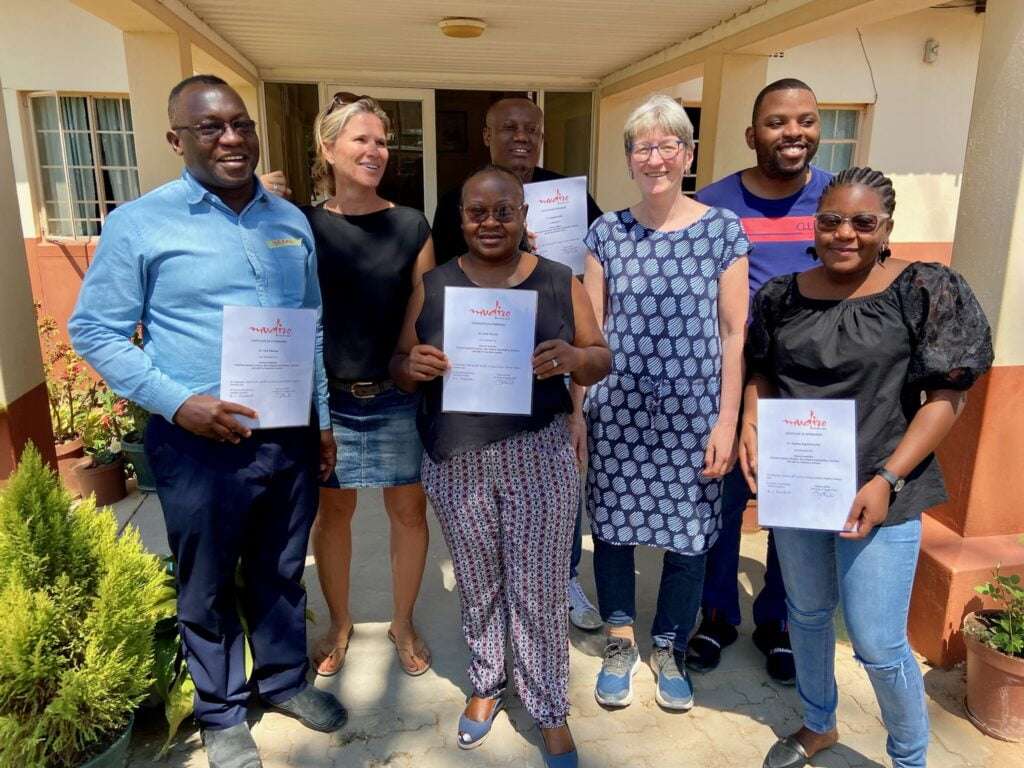
I have been working as an enthusiastic family doctor in Switzerland for 29 years. I have many opportunities for further education at home. I like to pass on my experience and knowledge in Namibia by means of lectures, bedside teaching, or collegial exchange. I also like to get involved in the hope that through the joint work of Mudiro the quality of medical care for Namibian patients can be continuously improved now and in the future.
For one and a half days, I taught doctors who had traveled far and wide on various topics of internal medicine as part of the Mudiro Academy. The level of knowledge and thirst for knowledge was heterogeneous. Nevertheless, we discussed many questions with each other and also practiced various examination techniques with each other.
In the container, we exchanged our hospital and teaching experiences in the evening and enjoyed the cozy dinner and the sunsets together. After that, eight of us went to the outreach. At the first outreach site, we were greeted with dances by the school children. The school rooms were quickly and easily transformed into examination rooms. Small children were vaccinated and 3-month shots were done. I also treated most patients with minor upper respiratory infections.
Two men remained in my vivid memory. For many years they had suffered on and off from ear infections and were hard of hearing. Both patients had large ear drum defects, the likes of which I had never seen before in Switzerland. One patient went directly to the Andara hospital the next day and was then referred to a specialist in Rundu, 200 kilometers away.
Camping, cooking, and eating together with the whole team under the open sky was fun and at the campfire, we enjoyed the sunsets and conversations together.
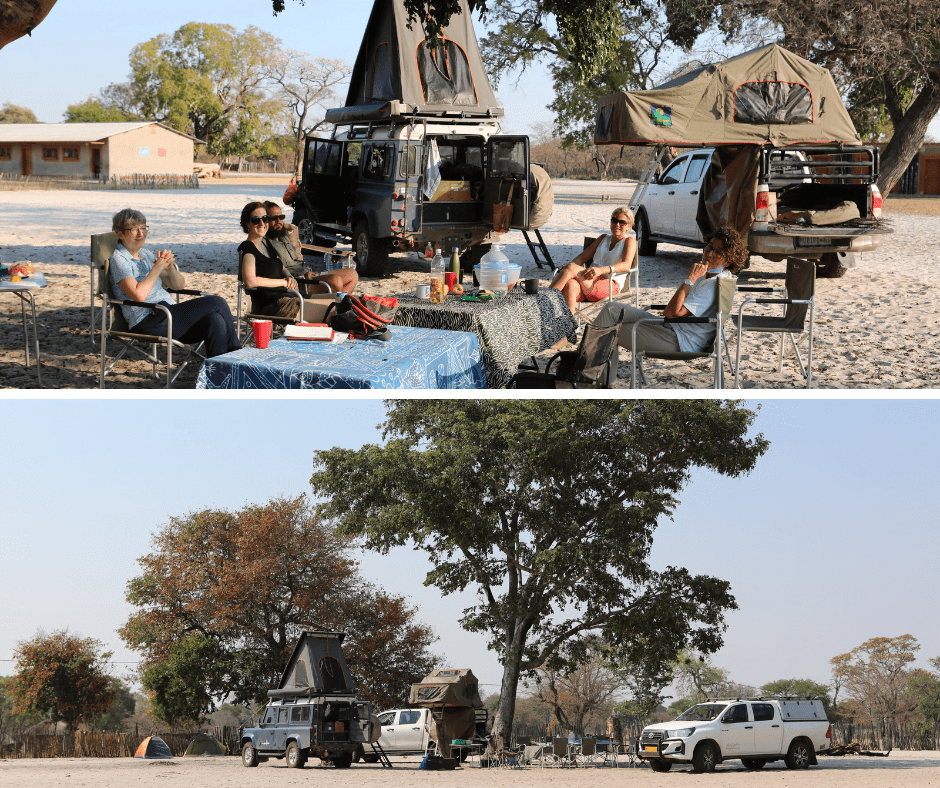
The 2 last days worked again in the hospital Andara. Two new assistant doctors were there. They were happy about the two lectures that also spontaneously found space in the hectic hospital routine.
The three weeks passed in no time and I took home various impressions.
I got to know many very committed people in the medical environment who, despite adverse circumstances and a lack of technical possibilities, carried out their work with dedication and cheerfulness. I experienced on-site how committed and warm-hearted Barbara Müller and Herman du Toit are in advancing the work of Mudiro in Northern Namibia. I met many people with severe fates and illnesses and I take with me in my heart that the work of Mudiro is in exactly the right place, both geographically and in terms of content.
I am looking forward to returning at a later date for a longer period of time, with a filled backpack with new ideas, lectures, and heart blood for the people in Namibia.
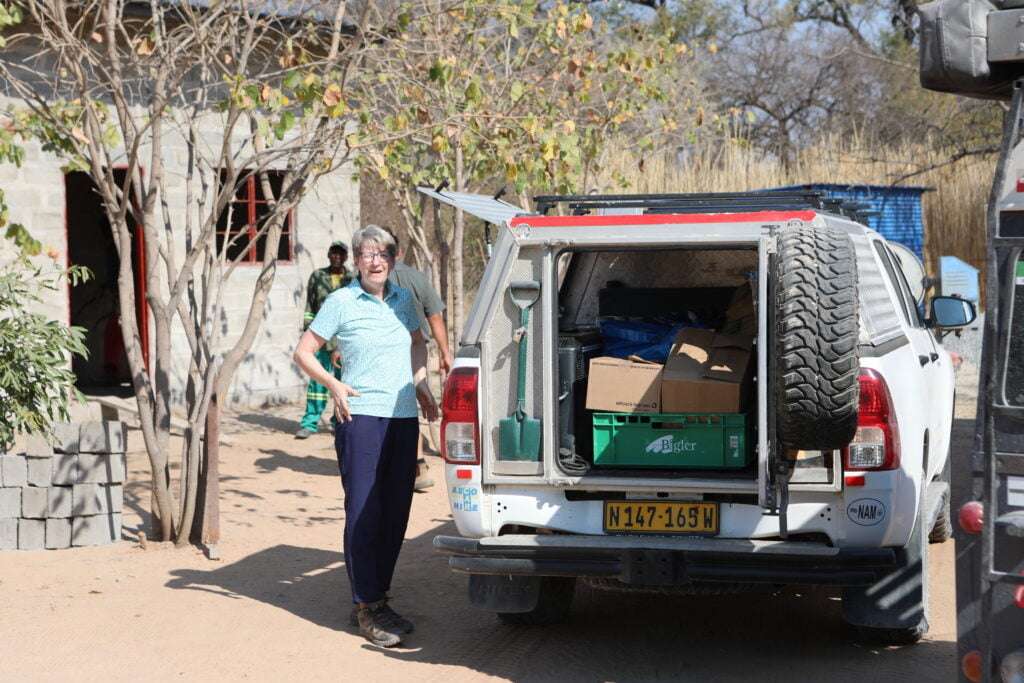
~ Dr. Corinne Rindisbacher

